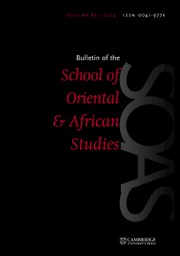Using newly excavated Chinese texts for linguistic reconstruction has become a twenty-first century trend: phonologists have paid increasing attention to the newly abundant evidence to examine previously proposed hypotheses and to put forward new ones, whereas philologists have helped to provide a reasonable morphological analysis of the texts. Essays on Chinese Palaeography and Old Chinese Phonology is a captivating and enlightening work by Professor Fuhai Zhang, which delves deep into the interpretations of excavated ancient Chinese texts, the analysis of Chinese characters, and some particular issues on Old Chinese phonology with the use of excavated documents, which offers many remarkable insights.
The book comprises a total of 40 contributions, including 39 papers previously published by the author between 2003 and 2020, as well as a modified version of the main body of the author's master's thesis (2002), “Annotated commentary on the Guodian bamboo slip ‘Ziyi’” 郭店簡《緇衣》篇注釋, the inclusion of which brings to completion the publication of his master's thesis. A second part of the thesis, “Two issues on ‘Ziyi’”《緇衣》二題 was previously published in 2003 and is also included in this book.
The collected papers can be roughly categorized as follows: 1) 13 essays on the interpretation of Warring States bamboo slips; 2) one essay on the interpretation of the Mawangdui silk manuscript Changes; 3) five essays on the interpretation of characters in Western Zhou bronze inscriptions; 4) two essays on the interpretation of characters in materials from both Western Zhou bronze inscriptions and Warring States bamboo slips; 5) six essays treating the analysis of the graphic forms of Chinese characters; 6) one study of the textual criticism of the Documents utilizing excavated texts; 7) two literary studies related to excavated texts; 8) eight essays that discuss topics in Chinese phonology in Chinese palaeography and specific practices of the reconstruction of specific words through the philology of excavated documents; and 9) two essays that treat particular issues on Old Chinese phonology utilizing excavated ancient Chinese texts. In general, these contributions can be summarized as interpretations of ancient Chinese texts and research on Old Chinese phonology, most of which belong to the mutual integration of both fields.
The book systematically introduces varied and abundant excavated and received ancient Chinese texts and a range of contemporary scholarly perspectives, revealing the interconnectedness of Chinese palaeography and phonology. To a certain extent, Zhang introduced the works of prominent linguists such as Zhengzhang Shangfang (1933–2018), Pan Wuyun (1943–), William H. Baxter (1949–), and Laurent Sagart (1951–) to Chinese palaeographers and the younger generation in this field of study. This enables readers to assimilate cutting-edge results from historical phonologists while also providing a rich and reliable body of achievements in palaeography. For example, it offers strong evidence from excavated documents to prove the initial consonants of the character 色 Middle Chinese (MC) srik “colour, appearance”, 所 MC srjoX “sound of hewing wood” in Old Chinese should contain a ŋ component (pp. 292–6), and the character 羔 MC kaw “lamb” should be categorized into the traditional yōu 幽 (*-u) rhyme group (pp. 280–4).
Many of the viewpoints and arguments presented in the book are persuasive and backed by abundant evidence. In this newly published collection, the author has added numerous annotations to his essays, supplementing them with new evidence and references to recent scholarship, references to previously overlooked research, and changes in the author's own views. These additions are the highlight of the new collection, which takes it beyond being a mere compilation of existing papers. However, it is regrettable that at times the author has not decisively abandoned flawed viewpoints but instead employed ambiguous wording. For instance, when discussing the Old Chinese rhyme group of character 並 MC bengX “side by side”, in the main text of the essay and in the newly added annotations, Zhang takes note of the Middle Chinese reading and this word's close connections with the words 并 MC pjiengH “side by side” and 併 MC pjiengH “side by side” as evidence to reconstruct the word to the traditional gēng 耕 (*-eŋ) rhyme group, but this proposal is contradicted by the evidence from the Fu Qian服虔's annotation cited by Pei Yin 裴駰's Collected Annotations on the “Shiji” 史記集解, graphic variants in excavated documents, and xiesheng series which instead indicate the yáng 陽 (*-aŋ) rhyme group (pp. 277–9). It would be natural to suggest that graphic form 並 originally recorded a word with OC *-aŋ and the meaning of “side by side” which is cognate with the word 傍 MC bangH “beside”, and later recorded MC bengX which was *-eŋ in Old Chinese.
Although he has mostly assimilated Baxter and Sagart's results, another disadvantage of the book is the author's failure to note the research of other important Western scholars. For example, when referring to studies of the merger of *-ps and *-ts (pp. 306–7), he omits the views of S.E. Yakhontov (Фонетика китайского языка в I тысячелетии до н.э. (система финалeй) [Phonology of the Chinese Language in the 1st Millennium B.C. (System of Finals)], Проблемы востоковедения (Problems in Oriental Studies), Moscow, 1959, No. 2) and S.A. Starostin (Реконструкция древнекитайской фонологической системы/Rekonstrukcija drevnekitajskoj fonologičeskoj sistemy (Reconstruction of Old Chinese phonological system), Moscow: ‘Nauka’. Glavnaja redakcija vostočnoj literatury, 1989).
Zhang's work is always commendable and it is worth the time and effort for both specialists in Chinese palaeography and phonology or general readers interested in Chinese scripts and language.



